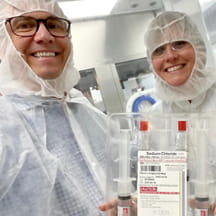When intravenous (IV) acetaminophen was beginning to be used as a pain management alternative to opioids, children's hospital pharmacy teams became concerned that usage would increase sharply. The medication, which costs 676 times more than its oral counterpart according to a 2019 JAMA Pediatrics article, could put pediatric patients at risk of harm.
A study published in Anesthesia & Analgesia found that IV acetaminophen lacks the research to demonstrate reduction in opioid usage when compared with other methods of acetaminophen administration. Two additional studies in the Journal of Pain Research and Canadian Journal of Hospital Pharmacy indicate that oral acetaminophen is as effective in pediatric pain management and can produce relief by the time IV acetaminophen reaches the floor for administration.
3 risks to pediatric patients and hospitals
- Unknown toxicity. IV acetaminophen has different pharmacokinetic properties than an oral tablet. An overdose protocol doesn't currently exist for IV acetaminophen, leaving clinicians without clear interventions if an overdose occurs.
- Vial size and overdose potential. IV acetaminophen only comes in an adult-oriented 1000mg/100ml vial, which is about three times more than what's needed for a pediatric dose. This increases the chances for overdosing a child or infant.
- High cost and waste. The average wholesale cost of one vial of IV acetaminophen is around $45. Children's hospitals in total spend roughly $22 million a year on the IV version, but only use $7 million—about 25%—of the product. In comparison, the oral product costs around two cents per dose.
The potential risks for pediatric patients and excessive costs led hospitals to develop new, or improve existing, drug use policies.
How 3 hospitals improved their drug use policies
Use these stories as a discussion guide to support the need for implementing usage restrictions while ensuring children receive appropriate pain management.
CHA's Pediatric Health Information System database shows that almost all of the 52 children's hospitals submitting data are in varying stages of using IV acetaminophen. In a new three-part series, three children's hospitals openly share their policies to control usage and reduce medication safety risks.
Creating a high-cost drug use policy that puts patient safety first: Concerned about the potential risks of IV acetaminophen to patients, Children's of Alabama developed a drug use policy that relies on pharmacy management.
Building a roadmap for reducing high-cost drug use: When IV acetaminophen spend increased by $100,000 in one year, Lucile Packard Children's Hospital Stanford aimed to get utilization under control.
Predetermined policies prevent high-cost drug utilization: Anticipating an increase in prescription requests, Valley Children's Hospital put proactive processes in place to contain usage of IV acetaminophen.


